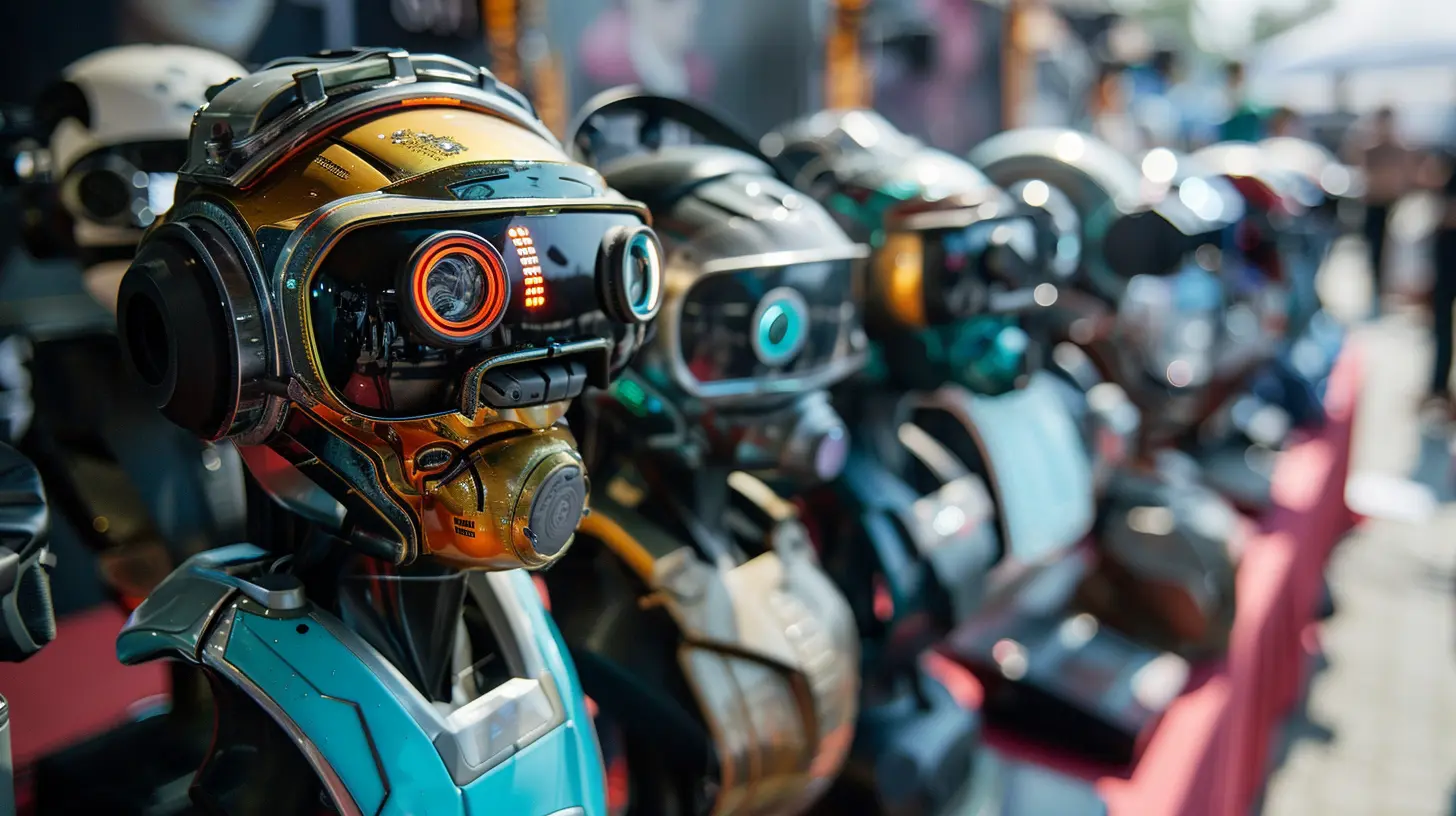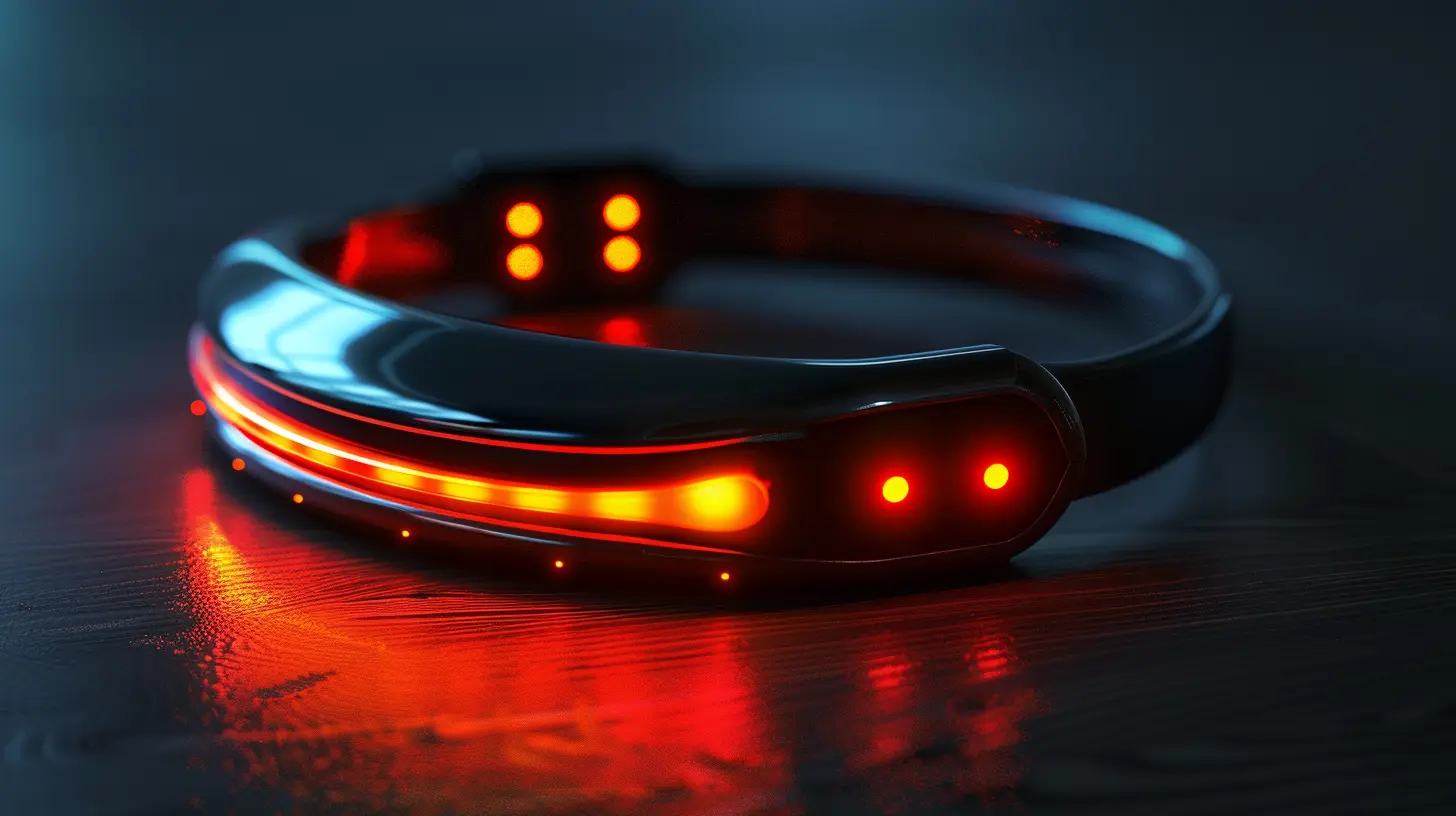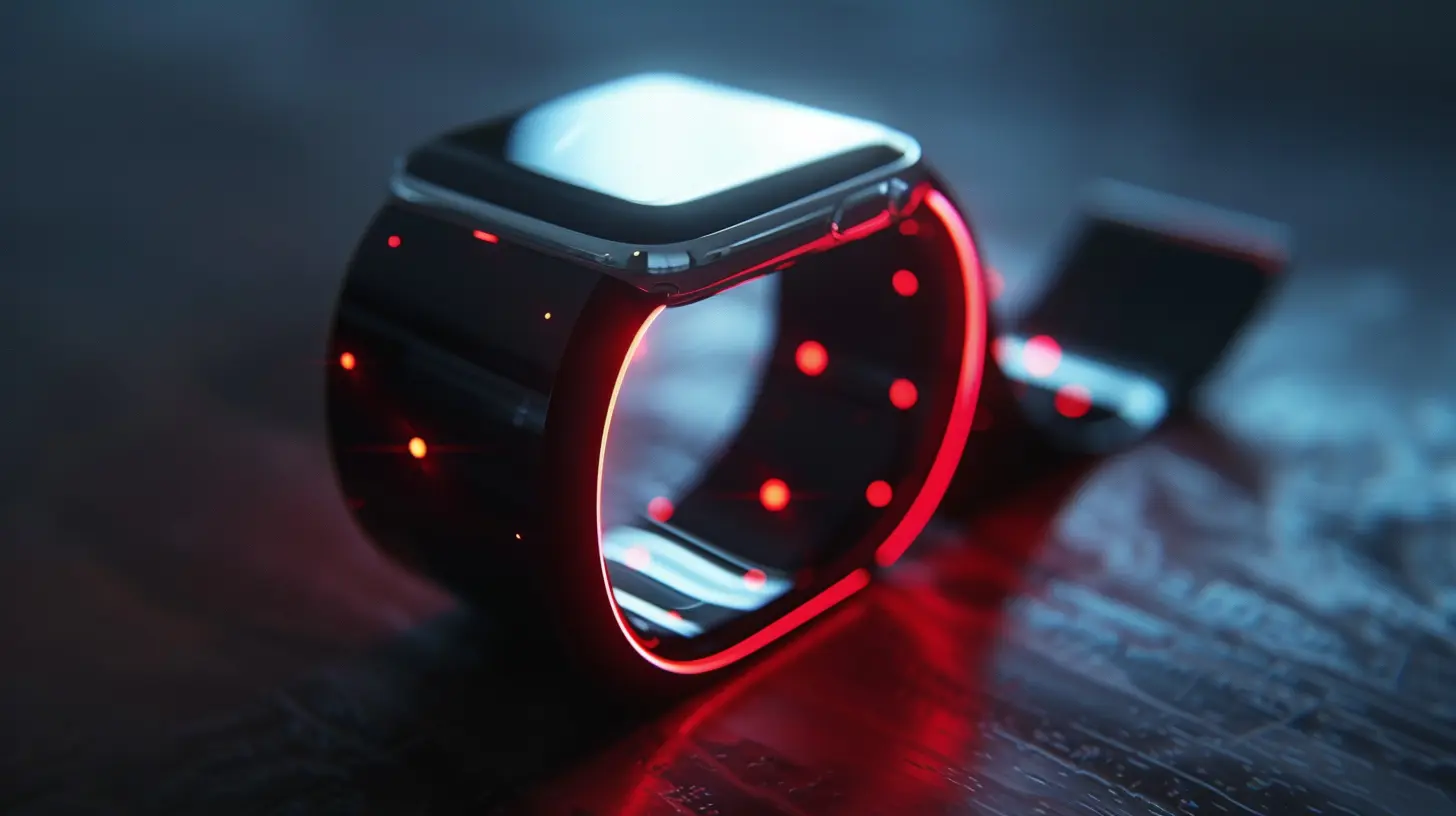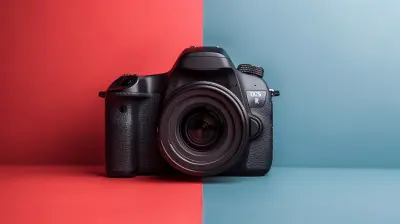The Role of AI in the Evolution of Wearable Technology
10 June 2025
Wearable technology has come a long way since the days of the humble pedometer. Today, we're seeing devices that can do way more than count your steps. From smartwatches to fitness trackers, from augmented reality glasses to health-monitoring gadgets, wearable tech is gradually becoming a part of our daily lives. But what’s driving this rapid evolution? One word—Artificial Intelligence (AI). AI is the secret sauce enhancing the capabilities of wearables, making them smarter, more intuitive, and incredibly useful.
In this article, we’re going to dive deep into the role of AI in shaping the future of wearable technology. We'll explore how AI is changing the landscape, improving user experiences, and redefining what wearables can do. So, whether you’re a tech enthusiast or just someone curious about the future, stick with me as we unravel the fascinating world of AI-powered wearables.

The Growing Popularity of Wearable Technology
Before we jump into the AI side of things, let’s take a moment to understand just how big wearable technology has become. In the past few years, wearables have exploded in popularity. According to reports, the wearables market is expected to reach $100 billion by 2024. That's a massive leap compared to where it was just a decade ago.So what’s fueling this boom? Well, it’s a combination of factors—our increasing focus on health and fitness, the convenience of having smart features literally at our fingertips (or wrists), and, of course, the advancements in tech. And now, with AI entering the scene, wearable technology is evolving faster than ever before.

How Wearable Technology Has Evolved
Wearable tech, in its early days, was relatively simple. Devices like the Fitbit or basic heart rate monitors gave us a glimpse into what was possible. But those early wearables were mostly reactive, limited to tracking and reporting data like steps taken, calories burned, or heart rate. They didn’t exactly “think” for themselves or offer personalized insights.Fast forward to today, and modern wearables are so much more than just data collectors. They’re becoming more proactive, thanks to AI. AI algorithms can analyze the data collected by wearables and provide users with tailored insights, recommendations, and even predict potential health risks. It’s not just about tracking anymore; it’s about interpreting and making sense of that data in real-time.

The Role of AI in Wearable Technology
1. Personalized Health Monitoring
Let’s start with one of the most impactful areas—health. AI has transformed wearables into personal health assistants. These devices now do more than just measure your heart rate or track your sleep. AI algorithms can analyze patterns in your behavior, predict potential health issues, and offer advice on how to improve your well-being.For instance, if your smartwatch notices that your heart rate is consistently elevated, it could prompt you to relax or even suggest that you consult a doctor. AI can also track your sleep patterns and offer tips to improve your sleep quality. Think of it as having a personal trainer or health coach on your wrist, 24/7.
2. Predictive Analytics in Health
One of the most fascinating applications of AI in wearables is predictive analytics, especially when it comes to health. Wearable devices equipped with AI can monitor your vital signs and predict potential health issues before they become serious. We’re talking about things like detecting irregular heart rhythms, predicting the onset of diabetes, or even identifying early signs of mental health issues.For example, some smartwatches are already capable of detecting atrial fibrillation (AFib), a serious heart condition, by analyzing your heart data over time. AI can spot patterns and anomalies that humans might miss, offering early intervention opportunities. In some cases, this could be life-saving.
3. Fitness Tracking & Optimization
Fitness tracking has always been a staple for wearables, but AI is taking things up a notch. Modern fitness trackers don’t just count your steps or calories anymore. Thanks to AI, they can analyze your workout routines, suggest improvements, and even create personalized exercise plans based on your fitness level and goals.Let’s say you’re training for a marathon. Your AI-driven wearable can analyze your running pattern, heart rate, and recovery time to suggest when you should push harder or take a rest day. It’s like having a running coach—without the hefty price tag.
4. Voice-Activated Assistants
Wearables are getting smarter in the communication department too. AI-powered voice assistants like Siri, Google Assistant, and Alexa are now being integrated into wearables. You can ask your smartwatch for directions, set reminders, or even send a text—all without touching your phone. It’s convenience at its finest.Voice interaction has become a major selling point for wearables, as it allows for hands-free operation. Whether you’re driving, jogging, or cooking, you can interact with your device using just your voice. And with AI constantly improving voice recognition, these assistants are becoming more accurate and intuitive.
5. Mental Health and Stress Monitoring
Mental health is often overlooked, but AI-powered wearables are starting to change that. Wearables can now monitor stress levels through variables like heart rate variability (HRV) and even detect signs of anxiety or depression. AI analyzes these metrics and can suggest mindfulness exercises, breathing techniques, or simply alert you to take a break when your stress levels are too high.This is particularly useful for people dealing with chronic stress or anxiety. Imagine your smartwatch gently reminding you to take a deep breath after a tough meeting or guiding you through a brief meditation session. These small nudges can make a big difference over time.
6. Improving Sleep Patterns
Sleep is crucial for overall health, but many of us struggle to get quality rest. AI-powered wearables can help here too. Devices like smartwatches and fitness bands now come with advanced sleep tracking features that monitor not only how long you sleep but also the quality of your rest.AI takes this data and provides insights into why you might not be getting enough deep sleep. It could be due to stress, lack of physical activity, or even your diet. Armed with this information, you can make adjustments to improve your sleep hygiene. Some wearables even offer AI-driven sleep coaching, guiding you toward better sleep habits.
7. Augmented Reality (AR) and Wearables
Augmented Reality (AR) is another exciting frontier where AI and wearables intersect. Devices like smart glasses are using AI to overlay useful information in real-time. Imagine walking down the street and having your glasses display directions, restaurant reviews, or even real-time language translation as you travel abroad.AI is also playing a role in enhancing AR experiences by making them more context-aware. For instance, AI algorithms can recognize objects or landmarks in your environment and provide relevant information or suggestions. This could be a game-changer for fields like education, navigation, and even professional industries like architecture or medicine.
8. Data Security and Privacy
With all this data being collected by wearables, the issue of privacy is a major concern. Luckily, AI is also stepping in to improve data security. AI algorithms can detect unusual patterns of behavior or potential security threats, ensuring that your personal information stays safe.For example, AI can monitor how you interact with your wearable device and detect if an unauthorized person is trying to access your data. It can also anonymize sensitive information or encrypt your data, adding an extra layer of protection. This is particularly important as wearables become more integrated into our healthcare systems, where privacy is paramount.

Challenges and Concerns
While AI-driven wearables are spectacular, they’re not without challenges. One of the major concerns is data privacy. With wearables collecting so much personal information, there’s always a risk that this data could be misused or fall into the wrong hands. Companies need to ensure that they’re prioritizing user privacy and data security.Another issue is the potential for these devices to become too reliant on AI. While AI can provide valuable insights, it’s not always 100% accurate. There’s always a risk of false positives or negatives, especially when it comes to health monitoring. Users should be aware of these limitations and not rely solely on AI for medical advice.
Finally, there’s the issue of affordability. AI-powered wearables tend to be pricey, which could limit accessibility for some users. As with any new technology, we hope that prices will eventually come down, making these devices more accessible to a wider audience.
The Future of AI in Wearable Technology
So, what’s next for AI and wearables? The possibilities are endless. As AI continues to advance, we’ll likely see even more personalized and proactive wearables that can cater to our individual needs. Imagine a future where your wearable device can not only monitor your health but also predict and prevent illness before it even happens.We could also see wearables becoming more integrated into our everyday lives, blurring the lines between technology and biology. Think about smart clothing that adjusts to your body’s temperature or AI-powered prosthetics that respond seamlessly to your movements.
One thing is clear—AI is set to play a huge role in the evolution of wearable technology. We’re only scratching the surface of what’s possible, and the future looks incredibly exciting.
Conclusion
AI is revolutionizing the wearable tech industry in ways we couldn’t have imagined just a few years ago. From personalized health monitoring to predictive analytics, from fitness optimization to mental health support, AI is making wearables smarter, more efficient, and more useful than ever before.As AI continues to evolve, so too will the capabilities of wearable devices, offering even more personalized, proactive, and immersive experiences. But with great power comes great responsibility, and it’s important for companies to prioritize user privacy and security as they move forward.
In the end, the fusion of AI and wearable technology is a win-win for consumers. Whether you’re into fitness, health monitoring, or just love cool gadgets, there’s no doubt that AI-powered wearables are here to stay—and they’re only going to get better.
all images in this post were generated using AI tools
Category:
Wearable DevicesAuthor:

Michael Robinson
Discussion
rate this article
3 comments
Franklin Chapman
The integration of AI in wearable technology enhances functionality by enabling real-time data analysis and personalized user experiences. This synergy not only optimizes health monitoring and fitness tracking but also drives innovation, paving the way for more intuitive and responsive devices in the future.
June 18, 2025 at 11:53 AM

Michael Robinson
Thank you for your insightful comment! I completely agree that AI's integration into wearable technology significantly enhances functionality and paves the way for innovative, user-centric devices.
Sylas McTavish
🎉 What an exciting exploration of AI's impact on wearable tech! It's incredible to see how these innovations enhance our daily lives, making health monitoring and connectivity more seamless than ever. The future looks bright with AI leading the way—can’t wait to see what’s next! 🚀✨
June 12, 2025 at 4:23 AM

Michael Robinson
Thank you! I’m glad you enjoyed the exploration. The future of AI in wearable tech is indeed promising, and I can’t wait to see how it continues to evolve! 🚀
Paul Richardson
AI transforms wearables, enhancing user experience profoundly.
June 10, 2025 at 4:20 AM

Michael Robinson
Thank you! Indeed, AI significantly enhances wearables by personalizing interactions and improving functionality.



